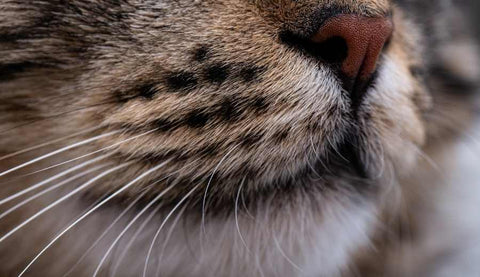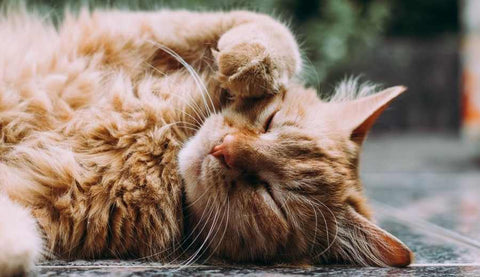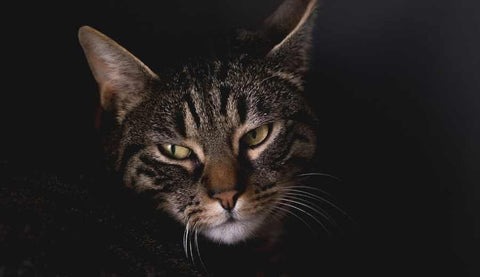We already touched on the science behind cats’ whiskers in our article on cats and their senses, but there’s so much to know about them that we decided they deserved their own guide.
Whiskers are much stronger than hair, although they’re also made of keratin and don’t contain any nerves - but that doesn’t mean they’re not sensitive. The nerves are found in the hair follicles, although the tips of whiskers contain something called a proprioceptor, which is another sensory organ. It’s this combination that makes whiskers so powerful!
Let’s take a look at some more whisker facts:

1. They’re common across the animal kingdom
Whiskers are also known as vibrissae—that’s their fancy Latin name—and they’re not exclusive to cats. In fact, most mammals have them, from mice to horses, and they’re even found on some fish! They’re pretty similar to the antennae that we find on insects, just on a much bigger scale…

2. There are more than you might think!
If you draw a cartoon cat, chances are you’ll pop some whiskers either side of their nose, but cats don’t just have whiskers on their face. Cats also have whiskers on top of their ears, along their jaw, and even on their legs! The carpal whiskers can be found on the backs of a cat’s front legs, and they’re there to help cats know where their prey is.

3. They’re a mood barometer
Cats can move their whiskers, and the position of your cat’s whiskers can help you to understand what they’re thinking. Relaxed whiskers pointing out towards the sides can mean a relaxed cat, whereas rigid whiskers and whiskers pinned back against their face could mean that your cat feels threatened and is trying to make themselves smaller. A curious or excited cat, on the other hand, might point their whiskers forwards.
4. Whiskers can turn grey as your cat ages
Turning grey as we age is no surprise to us humans, and it can happen to our cats’ whiskers too! While they generally start off white in colour, sometimes, as our cats age, their whiskers will change colour, turning grey or even black. Cats may also shed a few whiskers as they get older, but it’s no reason to worry, as another one will grow back in its place.

5. They’re symmetrical
Cats typically have 24 mystacial whiskers (these are the ones on either side of the cat’s muzzle) and these whiskers are distributed evenly, with 12 on each side—although the exact pattern of whiskers is unique to your cat. This whisker symmetry allows cats to get a really accurate understanding of their environment.

6. They act like night vision goggles!
Along with their superior night vision, it’s a cat’s whiskers that allow them to navigate in the dark, helping them to avoid obstacles. Their whiskers pick up on the very tiny vibrations caused by air currents, which helps them to detect objects before they get too close—which is some pretty impressive technology.
If all these whisker facts have got you curious about your cat’s other senses, you can also take a look at our article on how cats see!
23/06/2022 by NatuTeam
